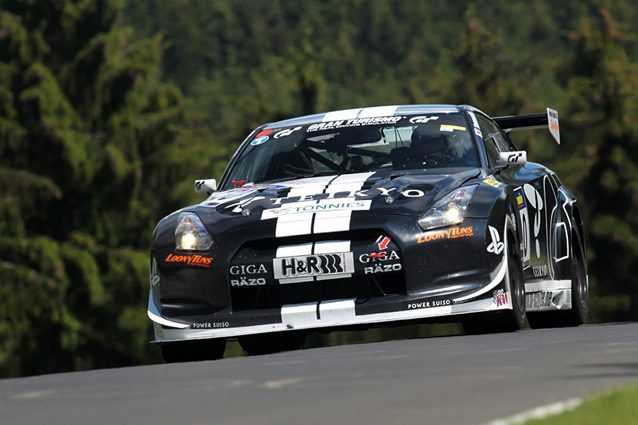For everyone thinking GT6 got camber wrong and zero degrees producing good results is simply stupid, think about this for a while.
Do we know if we're setting "setup values" or "live values"? I don't, and I doubt anyone else does.
Taking LFS as an example, everyone thinking it's a bad simulator raise your hand. OK, no hands up, I thought as much. So we can continue here with a couple of examples. All from setups made by myself, the aim being in getting nicely even tyre temperatures and of course making the car fast.
FXO Turbo - a front engined FWD road car, front camber set to -0.4 / 0.0, rear camber set to -1.6 / -1.2, actual values front -1.55 / -1.25, rear -1.55 / -1.25
RB4 GT - a Celica GT-Four clone, front camber set to -0.5 / -0.5, rear camber set to 0.0 / 0.0, actual values front -1.61 / -1.65, rear -0.95 / -1.00
FZ50 GTR - a rear engined GT500 class car, front camber set to 0.0 / 0.0, rear camber set to -0.5 / -0.5, actual values front -1.59 / -1.64, rear -1.41 / -1.45
Formula BMW - well, a Formula BMW, front camber set to +1.4 / +1.6, rear camber set to +0.2 / +0.5, actual values front -2.40 / -2.23, rear -2.65 / -2.38
The first reaction is WHAT THE 🤬 positive camber on the BMW? Yes, positive camber. It turns to negative (and into a pretty large value at that) as the suspension geometry is taken into account. Also notice several zeroes and otherwise very low values in the other cars that still transform into fully sensible amounts of camber when the car is actually sitting on the ground. For the most of the time the "setup values" have very little to do with the "live values" and the change can be to any direction, by pretty much any amount.


 With zero, that would lead to positive camber. The same goes with the front wheel, more negative camber under braking / compression, and less under heavy acceleration.
With zero, that would lead to positive camber. The same goes with the front wheel, more negative camber under braking / compression, and less under heavy acceleration.
 Good thing I forgot to hit the "reply" button.
Good thing I forgot to hit the "reply" button. 
 ) I know I speak for most when I say, thank you to all who have put in the time and posting your results. Just 1 question...Any reason for the different TOE settings, or did I miss something that you might have previously mentioned?
) I know I speak for most when I say, thank you to all who have put in the time and posting your results. Just 1 question...Any reason for the different TOE settings, or did I miss something that you might have previously mentioned?